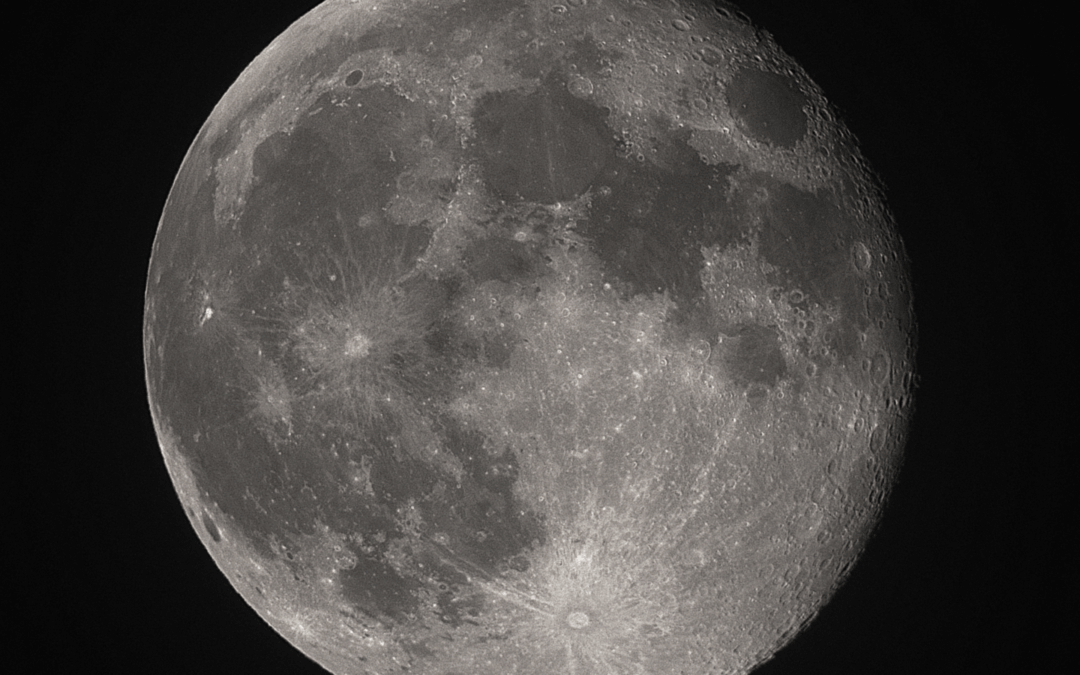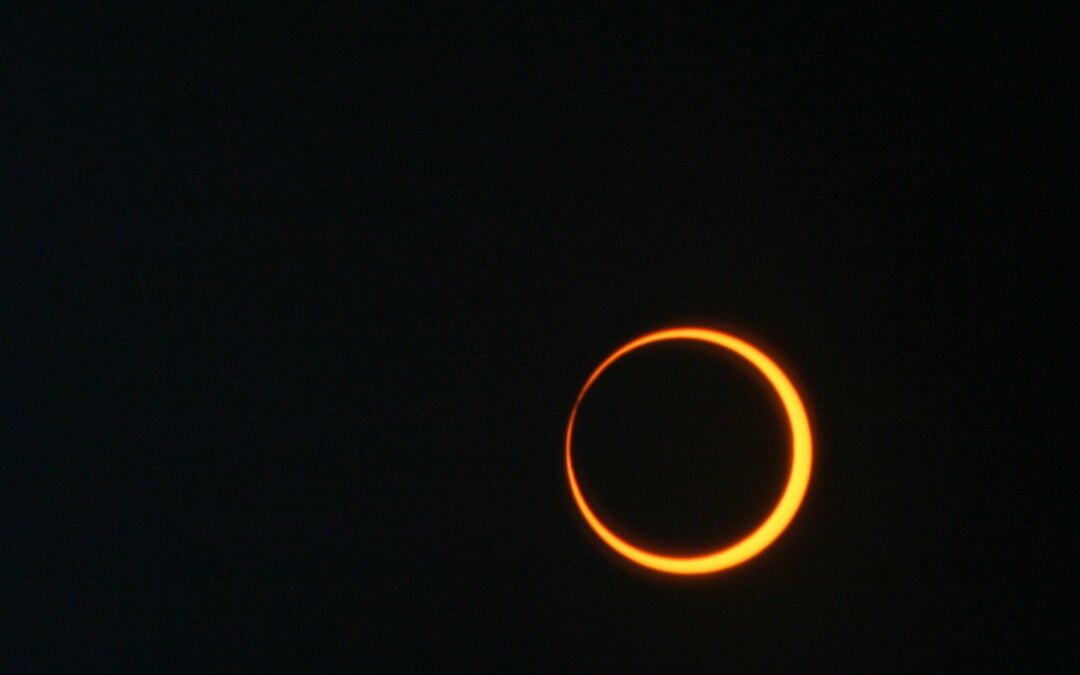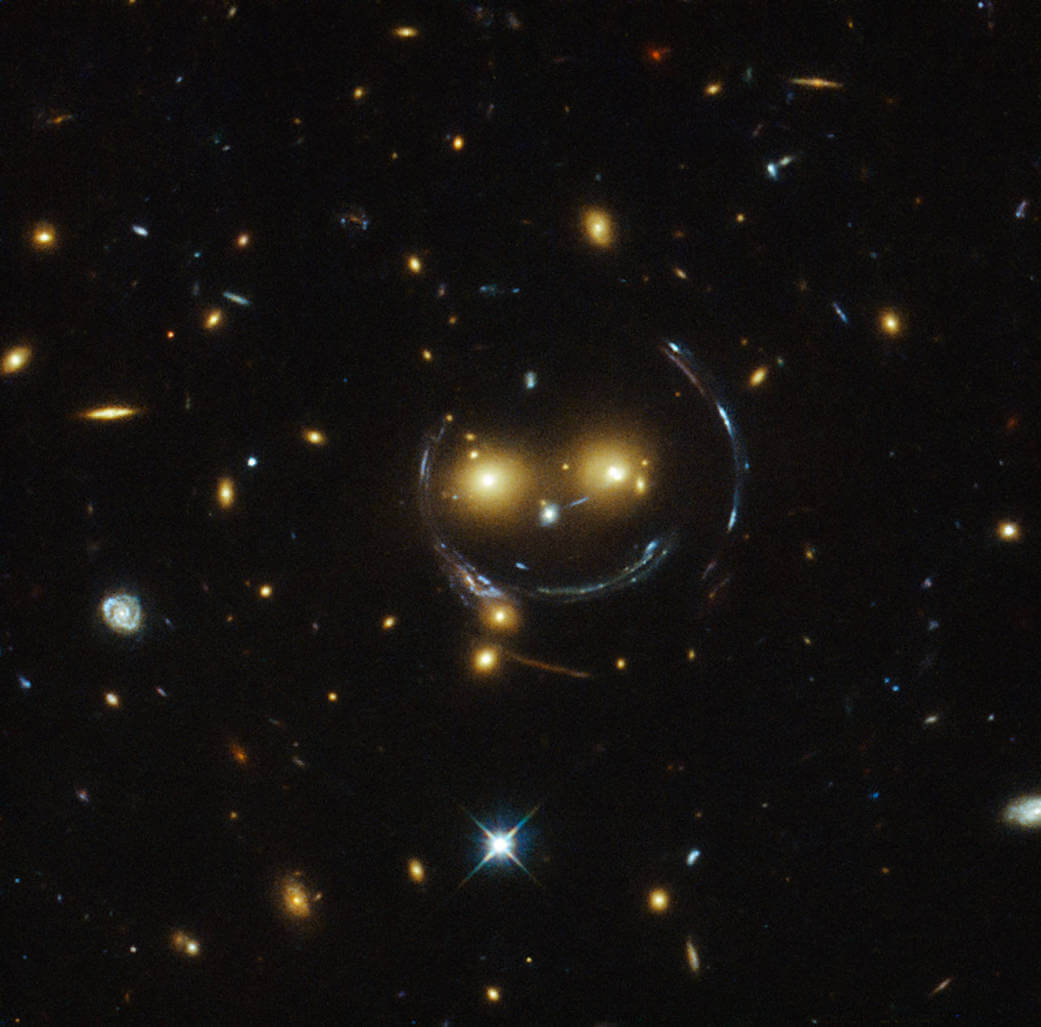Fall is in the air! Or Spring, if you’re in the Southern Hemisphere. Either way, the new season means fresh deep-sky objects are visible from Earth. We asked our Unistellar Ambassadors for the top picks of their favorite galaxies, star clusters and nebulae to observe this season. Here are some of their must-sees.

Image captured by Unistellar eVscope user Jacques Bérard (Canada)
Triangulum Galaxy
The Triangulum Galaxy (M33), a spiral galaxy found in the constellation Triangulum, was the deep-sky object most often recommended by our Unistellar Ambassadors. It’s the third-largest nearby galaxy after Andromeda and the Milky Way, and is bright enough to see with the naked eye when conditions are good.
“Messier 33 is one of our near galaxy neighbours in the Local Group. It shows beautiful spiral structure and lots of star formation, and it’s just the right size for the eVscope’s field of view!” says Mike Merrifield of the U.K.
“M33 is resplendent as a face-on lovely spiral,” says Greg Redfern in the U.S. “The imaging challenge is getting the fainter outer spiral arms, but Unistellar is up to the task.”
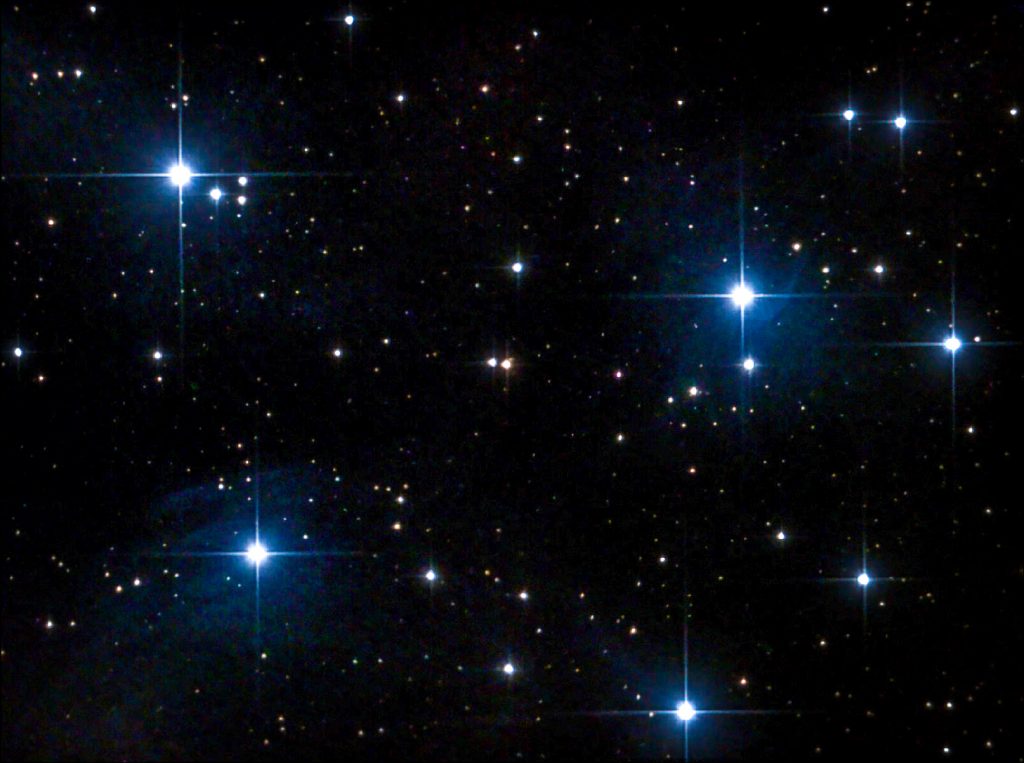
Two images of the Pleiades stitched together by Unistellar eVscope user David Rowe (United Kingdom)
Pleiades
Also known as the Seven Sisters, the Pleiades is the most obvious star cluster in the night sky. This deep-sky object, found in the constellation Taurus, is important to cultures around the world, and the car company Subaru is even named after them.
“Matariki (known elsewhere as Pleiades) is very important to the Māori,” says John Pickering, in New Zealand. “I’m looking forward to seeing what the eVscope can reveal of the cluster and sharing it with other New Zealanders.”
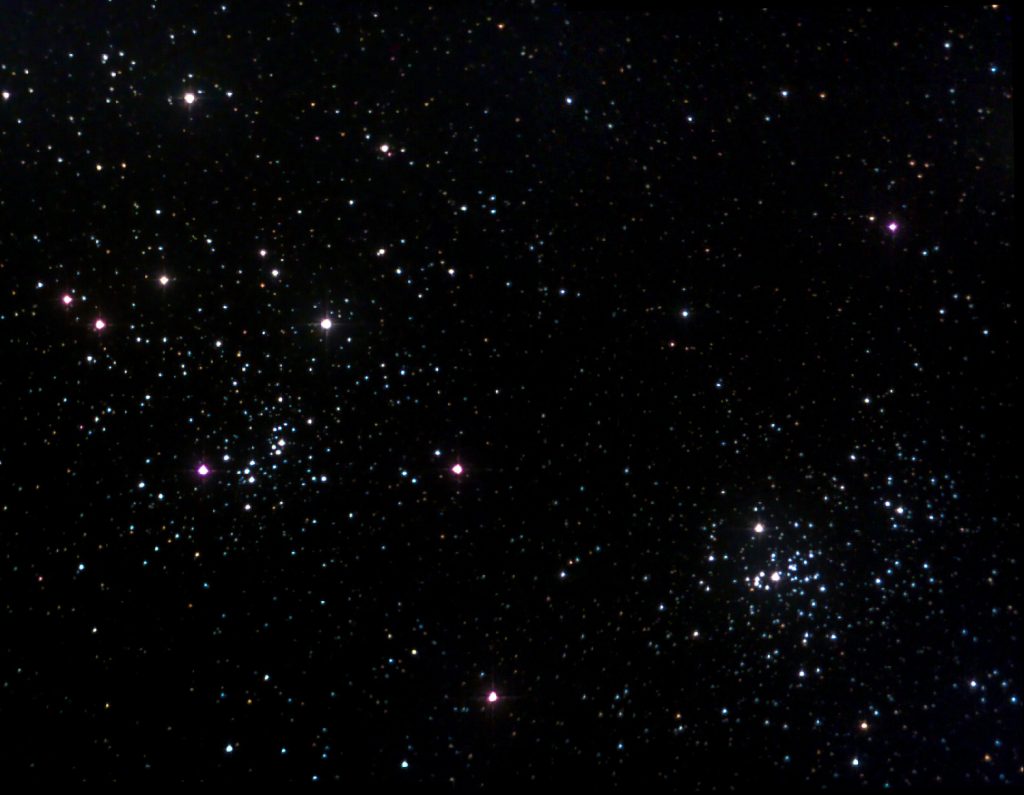
The pair of star clusters in the Double Cluster, NGC 869 & NGC 884, stitched together by Unistellar eVscope user David Rowe (United Kingdom)
Double Cluster
These two star clusters are visible with the naked eye, but look even better viewed with your eVscope. You’ll be able to observe individual stars within the two open clusters.
“My cheat is a two for one: the Double Cluster in Perseus, NGC 869 and NGC 884,” says David Rowe in the United Kingdom. “A beauty of the northern sky, even if Messier missed it!”
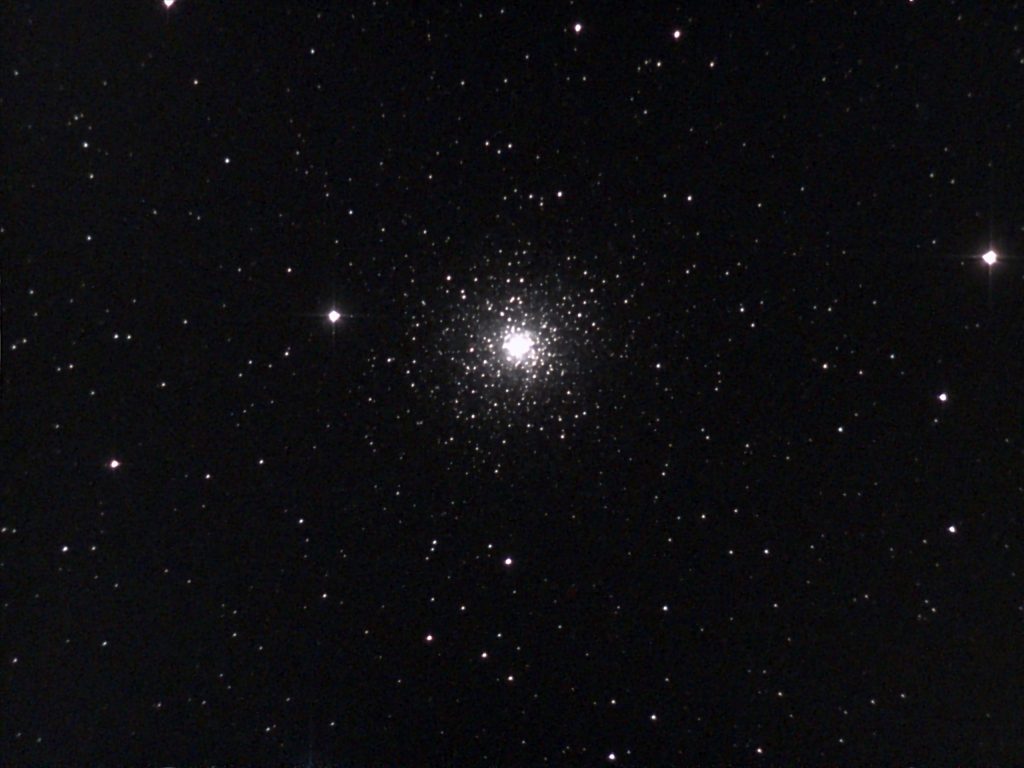
Image captured by Unistellar eVscope user Scott Kardel (USA)
Pegasus Globular Cluster
Residing 33,600 light-years from Earth, globular cluster Messier 15 is jam-packed with stars — so many, in fact, that astronomers suspect there may be a giant black hole at its core. Spot it in the constellation Pegasus, just off the horse’s head.
“The northern skies from June to August are positively filled with globular star clusters,” says Scott Kardel, a Unistellar Ambassador from the United States. “But as autumn gets underway, they become few and far between. That makes M15 my go-to globular for fall.”
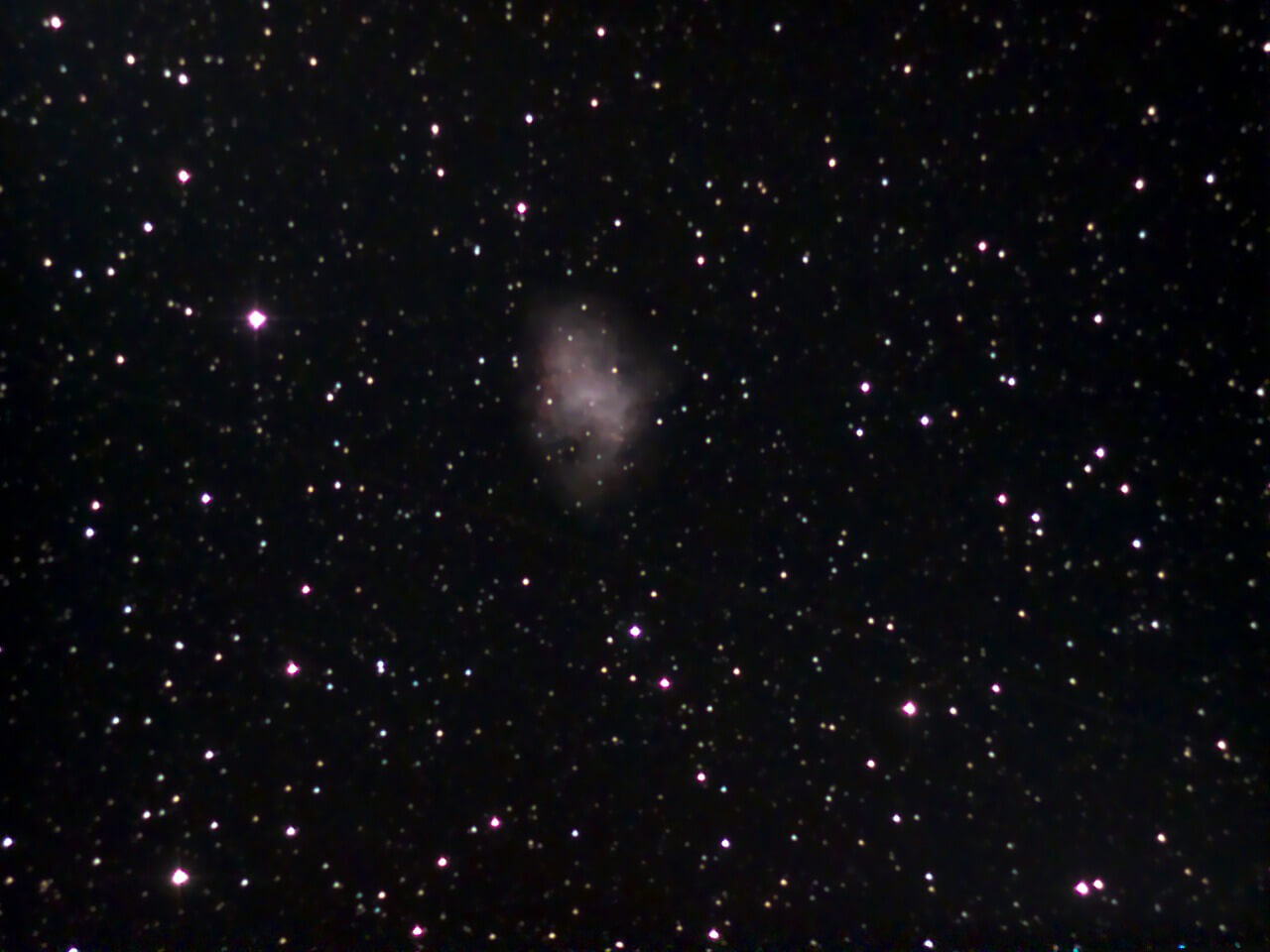
Image captured by Unistellar eVscope user Scott Kardel (USA)
Crab Nebula
This supernova remnant is visible in the constellation Taurus. Chinese astronomers actually recorded the supernova event in the year 1054! It earned its name from an 1842 sketch by astronomer William Parsons that resembled a crab.
“I’m amazed you can see both color and structure in the Crab Nebula,” says David Rowe. “It looks like a puff of smoke from an explosion, which, of course, is exactly what it is!”
We encourage you to share your observations and join the conversation through our Facebook, Instagram and Twitter pages using the hashtag #UnistellarChallenge!
If you’d like to send us your observations by email, send them to [email protected].
Clear skies! 🔭
Further readings
Unistellar Community Included In Multiple Scientific Papers
Did you know Unistellar Citizen Astronomers are often cited in published scientific papers? Find out how you can contribute too!
What Are the Names of All the Full Moons in 2024?
Discover the enchanting names of the full moons in 2024. Delve into the unique character of each lunar spectacle and embrace the allure of the night sky.
New Unistellar App Update: Version 3.0
The latest Unistellar App Update, version V3.0, is now live. Explore a smooth stargazing experience !
What to Observe This November: Open Star Clusters and More
These Halloween deep-sky objects will add some light to those dark, spooky nights. Treats, tricks, and telescopes await!
When Is the Next Solar Eclipse, and How to Observe It With a Unistellar Telescope
An annular solar eclipse is visible from the Americas on October 14. Learn how to witness the Ring of Fire with your Unistellar Telescope!
Halloween Observing Guide: Spooky Deep-Sky Objects
These Halloween deep-sky objects will add some light to those dark, spooky nights. Treats, tricks, and telescopes await!

